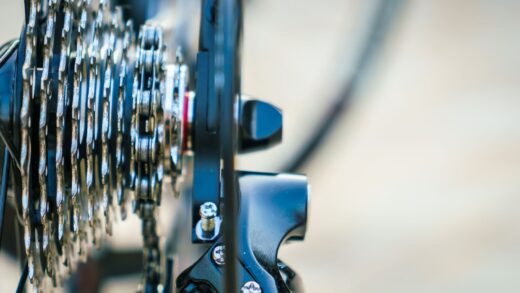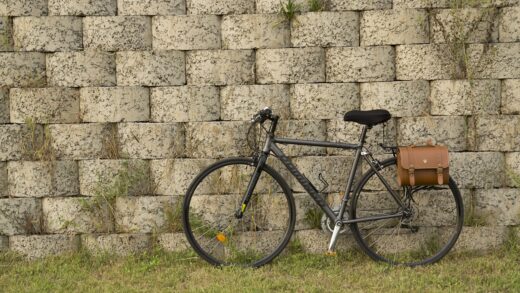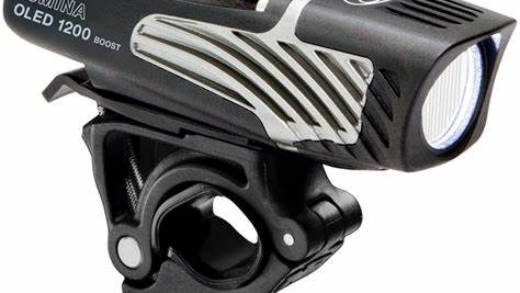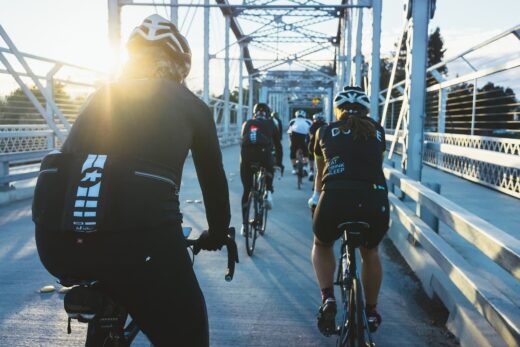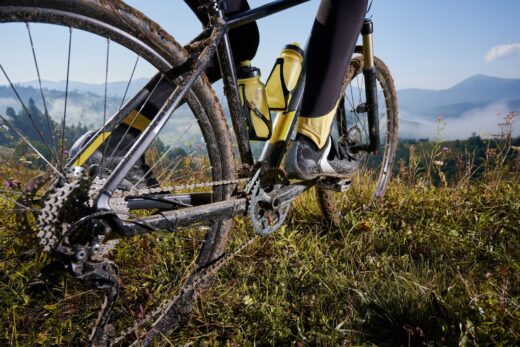Navigating the world of cycling modifications can be both exciting and challenging. Among the various upgrades, adding drop bars to hybrid cycles stands out due to the advantages it presents.
This comprehensive guide dives deep into the world of drop bars, examining their benefits, determining compatibility, and offering invaluable insights for their seamless installation.
By the guide’s conclusion, readers will be well-equipped to optimize their cycling experience with confidence.
Transitioning to the Road: Drop Bar Integration on Hybrid Cycles
For those looking to elevate their hybrid cycle’s adaptability, introducing drop bars can be a game-changer. If the term ‘road bike handlebars’ seems unfamiliar, or one is uncertain about their compatibility with hybrid cycles, fear not. This guide delves into the benefits of integrating these handlebars with hybrids and offers a step-by-step guide on achieving a perfect fit. With the insights provided, enthusiasts will be better prepared to navigate terrains with newfound confidence.
Why Drop Bars on a Hybrid Cycle Make Sense
Venturing into new terrains, seeking enhanced speeds, or simply desiring a unique cycling experience might lead one to consider the integration of drop bars. These handlebars offer multiple hand placements, minimizing fatigue, enhancing control, and boosting road speeds.
The good news? Incorporating them into a hybrid doesn’t demand an entirely new cycle purchase. With some dedication and a bit of effort, cyclists can achieve this unique setup themselves.
Determining Your Cycle’s Drop Bar Compatibility
Before making any changes, one must first assess the compatibility of their cycle with drop bars. An essential metric here is the reach of these handlebars, defined as the horizontal distance from the stem clamp to the bar’s most extended section.
Using calipers can quickly help measure the bar diameter. If the existing handlebar dimensions align with the desired drop bar measurements, the cycle is primed for the switch.
Selecting the Perfect Drop Bars: Key Considerations
Opting for a drop handlebar width resembling the shoulder width often yields the best results. A consistent diameter across the handlebars ensures a smoother conversion process. Stability and speed are also factors to weigh in when choosing.
Examining the handlebar’s diameter and width is advisable. For shifting mechanisms, ones with larger clamps, like bar-end shifters, are recommended.
Introducing Drop Bars to a Cycle with Flat Handlebars
It’s common for cycles initially equipped with flat handlebars to undergo a drop bar transformation. Such bicycles often lend themselves well to this upgrade, and in many cases, transitioning from a flat to a drop bar is cost-effective.
Benefits of Flat Handlebars:
- Hassle-free installation and maintenance;
- Promotes an ergonomic riding posture enhancing comfort and visibility;
Typically cost-effective compared to drop handlebars.
Limitations of Flat Handlebars:
- Restricted hand positioning affecting aerodynamics and speed;
- Not ideal for challenging terrains or downhill rides;
- Prolonged rides can become less comfortable due to limited motion range.
While the choice to switch remains personal, weighing the pros and cons and experimenting with various handlebar setups can guide the decision-making process.
Understanding Brake-Shifters for Road Bicycles
For those unfamiliar, V brakes are recommended for drop bars. However, this choice brings its set of challenges. Brake shifters tend to be on the pricier side and are typically designed with rubber brake levers, which aren’t always compatible with mountain or hybrid cycles.
Road bicycle brake levers have a shorter pull, translating to differences in brake cable movement compared to mountain or hybrid cycle brake levers. There are solutions, such as using cantilever brakes with a bike’s V-brake mount or opting for mini V-brakes. Yet, without V-brake mounts on the fork and frame, cantilever brake installation may not be possible.
Understanding Swept-Back Handlebars
Swept-back handlebars are increasingly being embraced for their characteristic curve, which arcs back in the direction of the cyclist, ensuring a more ergonomic and comfortable grip. Whether it’s for mountain, commuter, or road cycles, these handlebars can be tailored to accommodate diverse riders.
It’s essential, during installation, to affirm the appropriate height of the handlebars and ensure that every component is fastened securely. The primary advantage of these handlebars is the enhanced comfort and precision they offer.
Deciphering the Drop Bar Installation Methodology
Transforming your commuter cycle into a speed-oriented road vehicle isn’t as intricate as it sounds. All that’s required is the right tools and a touch of bravery. Delving deeper into the steps for installing drop bars on a commuter cycle:
- Firstly, detach the current handlebars and introduce the drop bars. Although it might necessitate changing the cycle’s stem shifters, procuring a compatible model that suits your cycle could simplify the procedure;
- Various models exist, and a quick online search or consultation at a nearby cycle store can offer insights into the apt stem for your frame;
- Upon securing the new handlebars and stem, it’s crucial to attach the brake levers and shifters. For those opting for a non-drop bar setup, these components would be situated on the upper section of the bars;
- It’s imperative to ensure that all cables are systematically connected as per the manufacturer’s guidelines;
- Expert Advice: Consider wrapping the handlebars with bar tape for optimal grip, especially during damp or perspiring conditions. This tape, often crafted from foam or synthetic fabrics, offers the rider additional padding and safeguards the handlebars from daily wear.
Lastly, modify the handlebar’s elevation and inclination based on the comfort of the ride, ensuring that all the controls are effortlessly reachable across different cycling postures. With that settled, the road awaits!
A Glimpse at Classic Road Cycle Drops
Typically, the standard drop bar design for a commuter cycle boasts a leveled top, straight extensions, and sides that arch downward. This design offers an aerodynamically efficient stance for extended journeys, making it perfect for endurance enthusiasts.
However, a slight caveat – such bars might demand enhanced flexibility, potentially causing discomfort during brief rides. For a smoother transition, it’s advisable to measure the diameter of your existing handlebars and opt for drops of equivalent dimensions.
A Look at MTB Drops
MTB drops have a distinct design with a slanted top—akin to standard road bars—but with a leveled surface and extended extensions. This design is a boon for cyclists wanting varied grip adjustments, especially during uphill climbs or bumpy tracks.
On the flip side, given their less aerodynamic posture compared to road bars, they may not be the first choice for extended journeys.
Drop Bar Conversion for Commuter Cycles: Is It Feasible?
Absolutely! It’s entirely plausible to incorporate drop handlebars on a commuter cycle. However, it’s crucial to remember that such a transformation is intricate.
Seeking the expertise of a seasoned cycle technician ensures that the transition to drop bars is executed flawlessly, with all essential components in place.
Adding Suspension to a Commuter Cycle: How Viable Is It?
Commuter cycles, being the perfect blend of mountain cycles’ adaptability and road cycles’ swiftness, often prompt the question: Is it feasible to enhance them with suspensions for added cushioning and control?
The verdict is a resounding yes! A few tweaks can equip a commuter cycle with suspensions, elevating its comfort and rideability. If considering such an upgrade, here are some recommendations to kickstart the process.
Selecting the Optimal Suspension
The type of cycling one intends to undertake largely dictates the most suitable suspension for a hybrid cycle. If one’s primary interest lies in off-road cycling, a full-suspension cycle equipped with both anterior and posterior shock absorbers proves ideal. However, for tarmac routes, a hardtail configuration or a simple suspension fork will suffice.
Enhance Your Brake Mechanism
Incorporating suspension into your cycle necessitates a brake overhaul. In cases where the cycle features rim brakes, an upgrade to disc brake systems is recommended for enhanced braking efficiency and augmented handling.
Anterior Derailleur Challenges
On a hybrid cycle, one will find that the anterior derailleurs don’t harmonize seamlessly with novel handlebar designs, much in the vein of their posterior counterparts. For example, a triple crankset derailleur exhibits incompatibility with index brake shifters, thereby mandating the acquisition of a new anterior derailleur. A notable limitation with this component is the inability to operate the brake levers directly from it.
Procure the Essential Instruments
Ensuring you have the necessary instruments is pivotal. This includes but isn’t limited to, a set of metric Allen keys. Additionally, a torque wrench, a cutting saw, and an electric drill are indispensable. Concluding the process involves wrapping the handlebars with your selected grip tape.
Contemplating Drop Bars for Mountain Cycles
While drop bars predominantly grace road and cyclocross cycles, mountain cycles can also be equipped with them. These handlebars offer several merits, such as superior aerodynamics and diversified hand placements. However, potential downsides must be evaluated.
- A primary incentive for incorporating drop bars on mountain cycles is the aerodynamic advantage they confer. Unlike riser bars, which elevate the cyclist’s hands but limit them to a single grip stance, drop bars streamline airflow more effectively, reducing resistance. This efficiency proves beneficial, especially during prolonged cycling sessions;
- Moreover, the multiple grip stances facilitated by drop bars can prove instrumental in navigating intricate trails. If the diameter of one’s existing handlebars mirrors that of the desired drop bars, compatibility isn’t an issue;
- However, while considering drop bars for mountain cycles, certain detriments must be acknowledged. The combined mass of the bars and the brake shifters could add weight to the cycle. Furthermore, a lower handlebar stance may challenge the cyclist during steep ascents and descents. The narrow span of drop bars might also pose challenges during sharp turns.
Among the varied brake shifter designs suitable for mountain cycles with drop bars are the Mini V brakes. Their compact architecture makes them apt for situations with space constraints, like drop bars. Not only do they offer potent braking capabilities, but their lightweight design ensures the cycle remains agile and responsive.
Conclusion
Fitting drop handlebars to hybrid models may appear intimidating initially; however, equipped with the right tools and guidelines, the task becomes considerably simpler.
By incorporating drop handlebars, hybrid cycles receive an augmented boost in performance, enabling riders to traverse any pathway with assuredness. Whether one is a seasoned cycling enthusiast or just getting started, introducing drop handlebars to a hybrid model promises an unparalleled riding experience.
Venture out and dominate those pathways!
FAQ
Indeed, the addition may pose some challenges concerning the cycle’s functionality and maneuverability. To ensure seamless integration, one may need to modify or replace specific components progressively.
From a technical standpoint, such a transformation is viable. However, acquiring an authentic road-specific model might be more beneficial. While the transition is possible, the end product may lack the innate geometry of a cycle crafted exclusively for the road.
Yes, even hybrid models can be enhanced with suspension systems when required. Such additions not only enhance rider comfort by mitigating jolts from uneven terrains but also bolster safety.
While one can consider such an addition, it might not always be the best fit. A majority of all-terrain cycles are designed with an extended reach in their geometry. Introducing drop handlebars on such models, especially when navigating gravel or shorter trails, might compromise safety.
Bar end shifters serve as an optimal choice for those using drop handlebars on all-terrain models. However, it’s essential to ensure component compatibility, evaluate handlebar height, and assess cable lengths prior to integration.
Drop handlebar attachments boast impressive versatility, allowing installation either at the bar tips or adjacent to the existing grip mechanisms. These additions afford an alternate hand posture, which can alleviate strain and amplify leverage during rides. While bar tips are commonplace on all-terrain and cyclocross models, their adaptability ensures they can be integrated into various cycle types, including hybrid and conventional road cycles with flat handlebars
